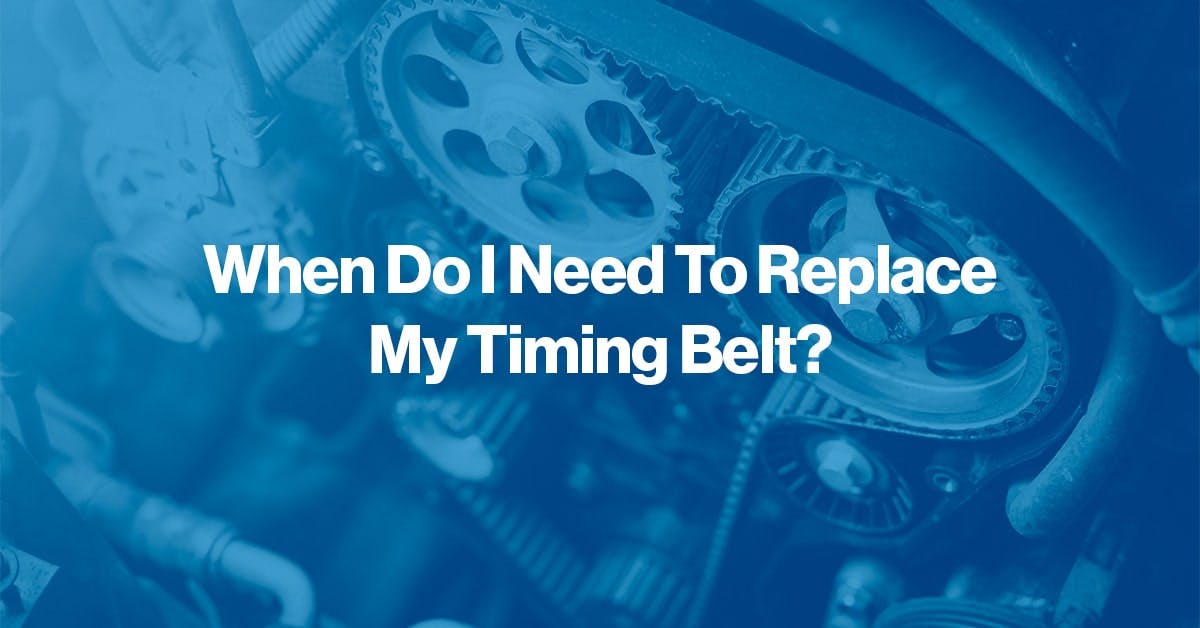In a 2025 survey, The Motor Ombudsman found that engine timing belt replacement is one of the most delayed areas of vehicle maintenance in the UK.
So, are you neglecting to book your car's cambelt change?
You could ultimately be in for a bigger repair.
Best to invest in a necessary repair at the recommended intervals so you can avoid additional jobs later down the road...
Page Contents
When Do I Need to Replace a Timing Belt?
Timing belts – also known as cambelts - usually need to be replaced between 40,000 and 100,000 miles.
For lower mileage cars, the timing belt should be replaced every 4 to 5 years, depending on the make and model.
If you are buying a new or used car, you should find out when the belt needs to be changed – if at all.
Timely replacements of the timing belt are essential - your car won't run without it.
What Happens During a Timing Belt Replacement?
During a cambelt replacement, a mechanic will usually do the following:
- Remove the fan belt
- Unfasten the bolts from the cambelt covers
- Mark the cogs
- Loosen the bolt on the tensioner pulley
- Remove the old belt
- Put the new belt on
- Tighten the new cambelt
- Tighten any bolts
- Put everything back together in reverse order
A cambelt replacement isn’t an easy job, which is why you should leave it to the professionals.
The timing belt is spread over a series of sprockets at a certain level of tension.
It is vital this is correct, otherwise the timing belt will not work.
The timing belt is usually quite deep under the car's bonnet, and replacing it requires taking various parts of the engine off to reach it.
Why Do Cambelts Need to Be Changed?
Over time, the rubber cambelts are made from begins to wear out, eventually causing them to snap.
When this happens, your engine could cut out or even be completely destroyed.
That’s why it is so important that you have your timing belt replaced at the appropriate intervals.
Otherwise, you may end up paying thousands of pounds or even having to replace the entire engine.
When the cambelt’s teeth wear down and start to slip, they can change position.
This is known as ‘jumping a tooth’ and could cause severe engine damage, too.
Is My Cambelt Failing?
Cambelts generally don’t give much indication that they are about to fail, but you should keep an ear out for a rubbing sound coming from the belt cover area.
If you hear this, switch off your engine and have your vehicle looked at by a professional garage as soon as possible.
Other warning signs can include:
- Leaking oil
- Car vibrating
- Cracked cambelt
- Glossy cambelt underside
- Car won’t start
- Car is overheating regularly
- A rattling noise when idling
- Tailpipe smoke
- Poor acceleration
Be sure to book a cambelt change at the earliest opportunity if you notice any of these warning signs.
Do I Need to Replace My Timing Belt Early?
You may need to replace your timing belt sooner than expected for several reasons.
If the timing belt becomes misaligned, the cylinders won’t be able to open and close properly.
Likewise, if you don’t use your car regularly, the timing belt will stiffen and weaken prematurely.
Any leaks or debris on the belt can reduce its effectiveness, causing slipping and further deterioration.
If the belt is not tight enough, it can become noisy and wear out quickly.
When this happens, the cambelt will need to be replaced.








No comments yet
Leave a comment